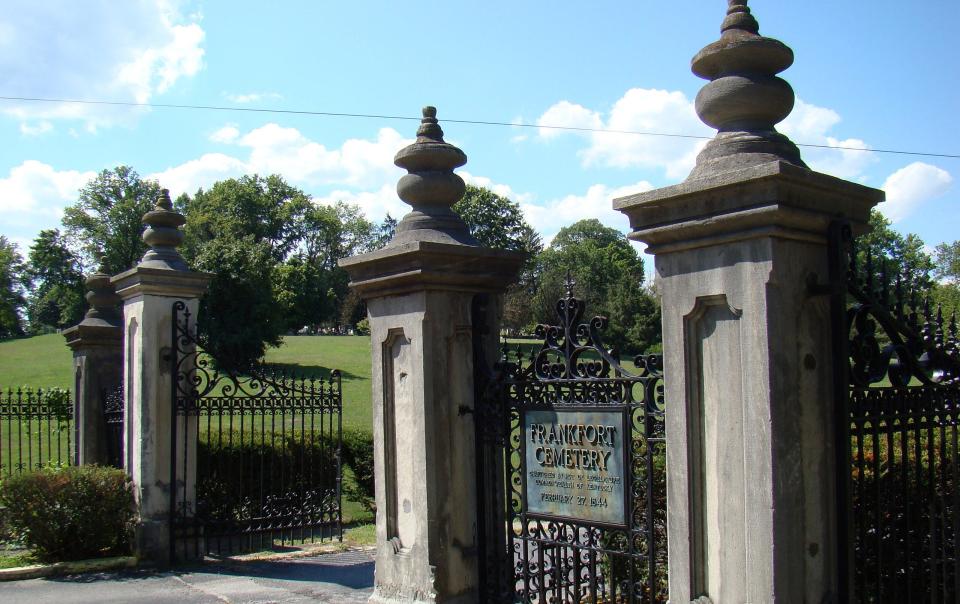Monroe History: Where were Kentucky troops who died in Battle of the River Raisin buried?
I recently received my copy of the October-December 2023 issue of "The River Raisin Dispatch," a publication of the Monroe County Historical Society. As I mentioned before on these pages, it is both an honor and a privilege to be a life member and learn from fellow members whose knowledge of Monroe County history far exceeds mine. I encourage everyone interested in continuing to share and preserve Monroe County history to join. Please contact Monroe County historian and MCHS membership chair Dave Eby for more information: www.monroecountyhistoricalsocietymi.org.
That said, there was a story in the paper that talked about the final resting place of the remains of Kentucky troops who fought in the Battle of the River Raisin at Frenchtown on Jan. 18, 1813. While I have written in the past about Kentucky Memorial Place – the monument to many of the fallen Kentucky soldiers buried in Monroe located at the corner of South Monroe and Seventh streets – I was intrigued by the article’s reference to the unburied remains of the Kentucky troops that were later collected and shipped back to Kentucky for proper burial – at an unknown location.
This missing piece of the Kentucky troops’ burial prompted me to put on my librarian and archivist hat and do some research to find out the answer if I could.

The article in "The River Raisin Dispatch," which references original content found in the "History of Monroe County Michigan" published in 1890 by Talcott Wing, also mentions the challenges that Frenchtown residents faced at the time surviving one of the most critical battles of the War of 1812 era that prevented them from tending to the dead Kentucky troops. This was one of the main reasons the remains were left to rot in the open fields surrounding what is today Monroe’s central quadrant.
That piece of information led me to ask myself the question, “Would a Kentucky-based historian who was studying the Battle of the River Raisin history have information about Kentucky troops buried in Kentucky that a Michigan-based historian might not focus on because of the geographical differences, etc.?”

I was lucky to find a reference from a September 1913 entry in the "Register of the Kentucky Historical Society," published since 1903 by the Kentucky Historical Society. The entry, “A Hundred Years Ago – The River Raisin” by A.C. Quisenberry, details the events leading up to and following the Jan. 18, 1813, Battle of the River Raisin. Highlighted are the activities of Gen. William Henry “Tippecanoe” Harrison who became leader of the American Army of the Northwest and, later, the ninth president of the United States. It was Harrison who gave the orders to retake Michigan from the British. Frenchtown was designated a strategic location where five Kentucky regiments were moving north through Cincinnati to eventually reach Frenchtown.
Brig. Gen. James Winchester led this left wing of American Army of the Northwest forces first to Fort Winchester (now Defiance, Ohio). Harrison later joined Winchester, and the former was based at Fort Stephenson (now Fremont, Ohio). Nearly 660 Kentucky troops then converged on Frenchtown on the fateful day of Jan. 17, 1813.
After the Battle of the River Raisin, British Col. Henry Proctor ordered all remaining inhabitants to relocate to Detroit – hence, the reason that dead Americans were left to rot. In 1818, some remains were taken to a Protestant cemetery in Detroit. In 1834, these remains were moved to Detroit’s Clinton Street Cemetery where they were then placed in boxes marked Kentucky’s Gallant Dead – Jan. 18, 1813. They were then shipped and interred in the State Cemetery in Frankfort, Kentucky.
Tom Adamich is president of Visiting Librarian Service, a firm he has operated since 1993. He also is project archivist for the Greening Nursery Co. and Family Archives and the electric vehicle awareness coordinator at Monroe County Community College.
This article originally appeared on The Daily Telegram: Where were Kentucky troops in Battle of the River Raisin buried?

